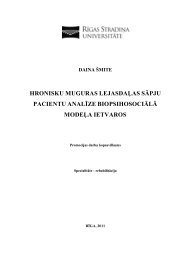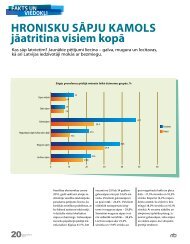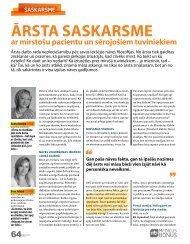91Proceedings from the 20 th World Congress of Sexual Healthlaying the foundation for clinical and regulatory research. The purposeof biomedical research involving human subjects must be to improvediagnostic, therapeutic and prophylactic procedures and understandingof the etiology and pathogenesis of disease. Progress is based onresearch, which ultimately involves human subjects. On July 12, 1974,the U.S .National Research Act (Pub. L. 93–348, created the NationalCommission for the Protection of Human Subjects of Biomedical andBehavioral Research. This Belmont Report attempts to summarize thebasic ethical principles identified in the course of its deliberations.The basic principles are respect for persons, beneficence, and justice.The voluntary consent of the human subject is essential. In clinicalresearch, the safety of research subjects is important. The charge is tominimize the likelihood of harms. Human subject protection includesHealth Organizations worldwide. Ensuring Ethical Promotion ofPharmaceutical Products is essential worldwide.30BSURVEYS OF SEXUALITY ANDSEXUAL PRACTICEJuliet RichtersSchool of Public Health and Community Medicine, University of New SouthWales Sydney, AustraliaLarge-scale sex surveys are sexy—from a media point of view. Journalistslove to cite figures on how many people say they have seen a pornoin the past year (and if they were alone at the time), how often theaverage person has sex, how many gay people there really are, and soon. At the same time, journalists also attack or make fun of the publishedresults, claiming that “no one tells the truth in those thingsanyway”.Survey teams bring together epidemiologists, psychologists, sociologistsand demographers. All approach the task of designing the surveyquestions and analysing the answers in different ways. People fromdifferent disciplines make different assumptions and draw on differentconceptual frameworks. The multidisciplinary team approach naturallycreates tensions, if often productive ones. Even in this multidisciplinaryteam framework, however, one important perspective is oftenmissing: linguistics. An interview or written questionnaire is, after all,a discursive interaction in which the question-setter and the respondenttry to understand each other.This is especially true in crafting text for computer-assisted telephoneinterviews. What do terms like “sexual contact” or “sexualpartner” mean to an ordinary person responding? Does it match withwhat a sex researcher means? How do you word questions about specificsexual practices so that they are simple enough for uneducatedrespondents to understand but at the same time are appropriatelyformal so as not to sound sleazy?There are also political pressures on any sex survey. Lobby groupsfrom rights activists to religious groups engaged in anti-rights activism,not to mention governments and pharmaceutical companies, all haveuses for the results of sex surveys. How do science teams negotiatetheir way through these competing pressures?We know more about these issues than the journalists think. In factthese questions can all be answered more or less successfully. With carewe can indeed ensure that most of the time people tell the truth, or atleast the truth as they understand it.Juliet Richters is part of the team that conceived and ran Australia’sfirst large-scale national sex survey of 19,307 men and women interviewedby telephone in 2001–2002. The same team is conducting the2012 survey. She also has experience in surveys of gay men and lesbians,college students and prisoners, and in-depth interpretive researchon sexuality.SYMPOSIA31HOW CAN A SMALL NATIONAL SOCIETYINFLUENCE SEXUAL HEALTH?D. EdwardsWhite House Surgery, Chipping Norton, Chipping Norton, UKIntroduction: This symposium will give a flavour of what a smallnational society (British Society for Sexual Medicine BSSM) can offerconcerning the important topic of male and female sexualdysfunction.Background and Aims: It will illustrate how its diverse membership(which includes medical practitioners of many specialisms, nursingspecialists and psycho-sexual therapists) can be a strength or weakness.Issues concerning organisation of such a group from an administrative,funding aspect and running a national conference will be discussed.There will be separate presentations demonstrating what the societyhas actually achieved recently. This will include the BSSM androgenguidelines for both men and women which have recently been updated.Guidelines on the use of vacuum erection devices on patients with CaProstate is another example of how locally written articles can be usefulto health care professionals. The important role of psycho sexualtherapists and how they fit into the BSSM will be presented.32LOW FREE TESTOSTERONE, ERECTILEDYSFUNCTION AND THE FREQUENCY OFTHE ERECTIONS IN 1,706 MENR. Runciman 1 , M. Bartholo 1 , A. Wood 2 , D. Steward 1 , D. Davies-South 1 ,T. Bennett 1 , K. Wylie 11 Porterbrook Clinic, University of Sheffield, 2 North Trent RotationalTraining Scheme in Old Age Psychiatry, Beighton Hospital, Sheffield, UKObjective: To corroborate the association of low testosterone(LT), erectile dysfunction (ED) and age with frequency oferections.Method: Patient records of 1,706 men at the Porterbrook Clinic andthe Royal Hallamshire Hospital with erectile dysfunction were analysedfor correlation between LT levels and erection frequency overthree age groups: 18–49, 50–64 and 64+ years. Frequency of erectionswas noted by patients as occurring ‘every day’, ‘2–3 times a week’, ‘oncea week’ or ‘less than once a week’ in a variety of situations. Free testosteronewas low
Proceedings from the 20 th World Congress of Sexual Health 9233SYPOSIUM: RELIGION AND SEXUAL HEALTHP. WeerakoonGraduate Program in Sexual Health, University of Sydney, Sydney, NSW,AustraliaSyposium:(i) Some Biblical Principles for Sexuality(ii) Sexuality and Hinduism(iii) Sexual Health, Sexual Ethics and IslamAims: To explore how sexual health and sexual ethics are representedin major world religions and how these are relevant to the 21st century.A panel of experts will present an overview of sexuality, sexual heathand sexual ethics from the perspective of Christianity, Judaism, Hinduismand Islam. Each presenter will then be allowed short ‘speech bytes’on hot topics in sexual health including issues such as abortion, samesex marriage/adoption, sex education, gender roles, prostitution/sextrade, pornography.34THE MEDIA: SEXUAL HEALTH SAINTOR SINNERS. Quilliam 1 , P. Hall 2 , M. Barker 3 , R. Findlay 4 , S. Nasserzadeh 5 ,Y. Ohlrichs 61 Self-employed, Cambridge, 2 Relate, London, 3 Social Sciences, OpenUniversity, Milton Keynes, 4 Family Planning Association, London, UK,5 Pfizer, New York, NY, USA, 6 Rutgers Nisso Group, Utrecht, TheNetherlandsOver the past decade in particular, the public media—radio, television,print, the internet as well as social networking such as Twitter andFacebook—has been blamed for many of the problems in our sexualisedsociety. Banner headlines, celebrity shock stories, pornographyof all kinds—none of these are helpful to the cause of sexual health,sex education and a mature view of sexuality.But is there another side to the story? For the media also communicatepositive, helpful sexual messages, provides accurate sex education,and offers confidential routes by which those with sexual problemscan be supported.This symposium presents a wide range of evidence and viewpointsfrom all sides of the media and sexology communities worldwide, togive delegates a comprehensive appreciation of the dangers but alsothe benefits of the media. This will not be a formal debate, but around table of current practice that informs the audience, allows themthe opportunity to interact, question and challenge—and alsoresources them to work with the media to present sexual issueseffectively.35ORGASMS ACROSS CULTURESS. NasserzadehPrivate Practice, New York, NY, USACultural differences in understandings of orgasm.Different cultures with their particular views about gender rolewithin a relationship might have diverse views on Orgasm, how itshould feel, what it represents and who is entitled to it. This brief talkwill be an overview of the subject with a couple of case reports to shedsome light on the topic.Take home messages:• Orgasm could send different messages men and women in thecontext of a particular culture• Presenting problems about orgasm could be worded differently bydifferent clients based on their cultural values and linguistic abilities(both in English and in their native language)• The concept of mutual pleasure is a core concept to be discussedwhen discussing orgasmic abilities36MULTIPLE MEANINGS OF ORGASMSM. BarkerPsychology in Social Sciences, The Open University, Milton Keynes, UKDiagnoses and therapy with people who are struggling with orgasmstends to assume that orgasms are a positive experience which adultsshould be having during sex. This brief presentation considers themultiple possible meanings of orgasm for people, both between differentpeople and within the same person at different times. Drawing onPeggy Kleinplatz’ ideas that bodies which struggle to have certainkinds of sex may carry a message, it highlights the importance ofunderstanding what orgasms—and their lack—mean to clients beforeworking with them to make any changes.Take home messages:• Orgasms mean different things to different people at different times• Understanding the individual meaning of orgasm is vital to therapy• Bodies that do not orgasm in expected ways may be carrying a message• Opening up the possibilities for orgasmic, and non-orgasmic, experiencescan be valuable37BESIDES ORGASM: BROADENING THE PATHOF SEXUAL INTIMACYA. IantaffiDivision of Epidemiology and Community Health, University of MinnesotaSchool of Public Health, Minneapolis, MN, USAMany people who seek sex therapy see orgasm as an essential goal tobe achieved. Yet, this can often become an obstacle to interventionsthat challenge clients to broaden their definition of sex. It can alsohinder people’s search for intimacy, which often seems to be a motivatingfactor when seeking therapeutic help in relation to sexual issues.This seems to be a central issue in particular when working withindividuals and couples working within an heteronormative paradigm.Drawing on queer theory and insights from research carried out withpeople who identify as queer, polyamorous, asexual and/or BDSMpractitioners, this brief presentation will highlight how many peopleand communities have found several alternative paths to intimacybesides orgasm and how using those insights and experiences in boththerapy and research could benefit the broader community.Take home messages:• Orgasm can become a hindrance to therapeutic improvement forsome clients.• Heteronormative discourses have traditionally considered orgasm asthe privileged path to sexual intimacy.• Many people within non-mainstream communities have createdother ways in which sexual intimacy can be obtained and valued.• Recognizing broader concepts and experiences of sexual intimacy inboth clinical and research contexts can be beneficial.38WORKING WITH ORGASMSBIOPSYCHOSOCIALLYT. BarnesPrivate Practice, London, UKSexual motivation, arousal, response and satisfaction need to be understoodin a biopsychosocial context which factors in cultural and personalmeaning, not only function. Two conceptual models will bepresented which assist the clinician in assessing and understanding thekey sexual and relationship issues as experienced by the individual and/or couple.Take home messages:• Sexual difficulties and disorders may be identified and understoodin terms of a “sexual circuit” which encompasses sexual motivation,arousal and response systems.J Sex Med 2011;8(suppl 3):84–299jsm_2325.indd 925/20/2011 8:18:12 PM
- Page 1 and 2: ALE & FEMALE SEXUAL FUNCTION & DYSF
- Page 3 and 4: INTERNATIONAL SOCIETY FOR SEXUAL ME
- Page 5 and 6: The Journal of Sexual Medicine, (IS
- Page 7 and 8: 80Message from Rosemary Coates WAS
- Page 9 and 10: 82Scientific Research at the World
- Page 11: 84Proceedings from the 20 th WORLD
- Page 14 and 15: 87Proceedings from the 20 th World
- Page 16 and 17: 89Proceedings from the 20 th World
- Page 20 and 21: 93Proceedings from the 20 th World
- Page 22 and 23: 95Proceedings from the 20 th World
- Page 24 and 25: 97Proceedings from the 20 th World
- Page 26 and 27: 99Proceedings from the 20 th World
- Page 28 and 29: 101Proceedings from the 20 th World
- Page 30 and 31: 103Proceedings from the 20 th World
- Page 32 and 33: 105Proceedings from the 20 th World
- Page 34 and 35: 107Proceedings from the 20 th World
- Page 36 and 37: 109Proceedings from the 20 th World
- Page 38 and 39: 111Proceedings from the 20 th World
- Page 40 and 41: 113Proceedings from the 20 th World
- Page 42 and 43: 115Proceedings from the 20 th World
- Page 44 and 45: 117Proceedings from the 20 th World
- Page 46 and 47: 119Proceedings from the 20 th World
- Page 48 and 49: 121Proceedings from the 20 th World
- Page 50 and 51: 123Proceedings from the 20 th World
- Page 52 and 53: 125Proceedings from the 20 th World
- Page 54 and 55: 127Proceedings from the 20 th World
- Page 56 and 57: 129Proceedings from the 20 th World
- Page 58 and 59: 131Proceedings from the 20 th World
- Page 60 and 61: 133Proceedings from the 20 th World
- Page 62 and 63: 135Proceedings from the 20 th World
- Page 64 and 65: 137Proceedings from the 20 th World
- Page 66 and 67: 139Proceedings from the 20 th World
- Page 68 and 69:
141Proceedings from the 20 th World
- Page 70 and 71:
143Proceedings from the 20 th World
- Page 72 and 73:
145Proceedings from the 20 th World
- Page 74 and 75:
147Proceedings from the 20 th World
- Page 76 and 77:
149Proceedings from the 20 th World
- Page 78 and 79:
151Proceedings from the 20 th World
- Page 80 and 81:
153Proceedings from the 20 th World
- Page 82 and 83:
155Proceedings from the 20 th World
- Page 84 and 85:
157Proceedings from the 20 th World
- Page 86 and 87:
159Proceedings from the 20 th World
- Page 88 and 89:
161Proceedings from the 20 th World
- Page 90 and 91:
163Proceedings from the 20 th World
- Page 92 and 93:
165Proceedings from the 20 th World
- Page 94 and 95:
167Proceedings from the 20 th World
- Page 96 and 97:
169Proceedings from the 20 th World
- Page 98 and 99:
171Proceedings from the 20 th World
- Page 100 and 101:
173Proceedings from the 20 th World
- Page 102 and 103:
175Proceedings from the 20 th World
- Page 104 and 105:
177Proceedings from the 20 th World
- Page 106 and 107:
179Proceedings from the 20 th World
- Page 108 and 109:
181Proceedings from the 20 th World
- Page 110 and 111:
183Proceedings from the 20 th World
- Page 112 and 113:
185Proceedings from the 20 th World
- Page 114 and 115:
187Proceedings from the 20 th World
- Page 116 and 117:
189Proceedings from the 20 th World
- Page 118 and 119:
191Proceedings from the 20 th World
- Page 120 and 121:
193Proceedings from the 20 th World
- Page 122 and 123:
195Proceedings from the 20 th World
- Page 124 and 125:
197Proceedings from the 20 th World
- Page 126 and 127:
199Proceedings from the 20 th World
- Page 128 and 129:
201Proceedings from the 20 th World
- Page 130 and 131:
203Proceedings from the 20 th World
- Page 132 and 133:
205Proceedings from the 20 th World
- Page 134 and 135:
207Proceedings from the 20 th World
- Page 136 and 137:
209Proceedings from the 20 th World
- Page 138 and 139:
211Proceedings from the 20 th World
- Page 140 and 141:
213Proceedings from the 20 th World
- Page 142 and 143:
215Proceedings from the 20 th World
- Page 144 and 145:
217Proceedings from the 20 th World
- Page 146 and 147:
219Proceedings from the 20 th World
- Page 148 and 149:
221Proceedings from the 20 th World
- Page 150 and 151:
223Proceedings from the 20 th World
- Page 152 and 153:
225Proceedings from the 20 th World
- Page 154 and 155:
227Proceedings from the 20 th World
- Page 156 and 157:
229Proceedings from the 20 th World
- Page 158 and 159:
231Proceedings from the 20 th World
- Page 160 and 161:
233Proceedings from the 20 th World
- Page 162 and 163:
235Proceedings from the 20 th World
- Page 164 and 165:
237Proceedings from the 20 th World
- Page 166 and 167:
239Proceedings from the 20 th World
- Page 168 and 169:
241Proceedings from the 20 th World
- Page 170 and 171:
243Proceedings from the 20 th World
- Page 172 and 173:
245Proceedings from the 20 th World
- Page 174 and 175:
247Proceedings from the 20 th World
- Page 176 and 177:
249Proceedings from the 20 th World
- Page 178 and 179:
251Proceedings from the 20 th World
- Page 180 and 181:
253Proceedings from the 20 th World
- Page 182 and 183:
255Proceedings from the 20 th World
- Page 184 and 185:
257Proceedings from the 20 th World
- Page 186 and 187:
259Proceedings from the 20 th World
- Page 188 and 189:
261Proceedings from the 20 th World
- Page 190 and 191:
263Proceedings from the 20 th World
- Page 192 and 193:
265Proceedings from the 20 th World
- Page 194 and 195:
267Proceedings from the 20 th World
- Page 196 and 197:
269Proceedings from the 20 th World
- Page 198 and 199:
271Proceedings from the 20 th World
- Page 200 and 201:
273Proceedings from the 20 th World
- Page 202 and 203:
275Proceedings from the 20 th World
- Page 204 and 205:
277Proceedings from the 20 th World
- Page 206 and 207:
279Proceedings from the 20 th World
- Page 208 and 209:
281Proceedings from the 20 th World
- Page 210 and 211:
283Proceedings from the 20 th World
- Page 212 and 213:
285Proceedings from the 20 th World
- Page 214 and 215:
287Proceedings from the 20 th World
- Page 216 and 217:
289Proceedings from the 20 th World
- Page 218 and 219:
291Proceedings from the 20 th World
- Page 220 and 221:
293Proceedings from the 20 th World
- Page 222 and 223:
295Proceedings from the 20 th World
- Page 224 and 225:
297Proceedings from the 20 th World
- Page 226:
299Proceedings from the 20 th World













